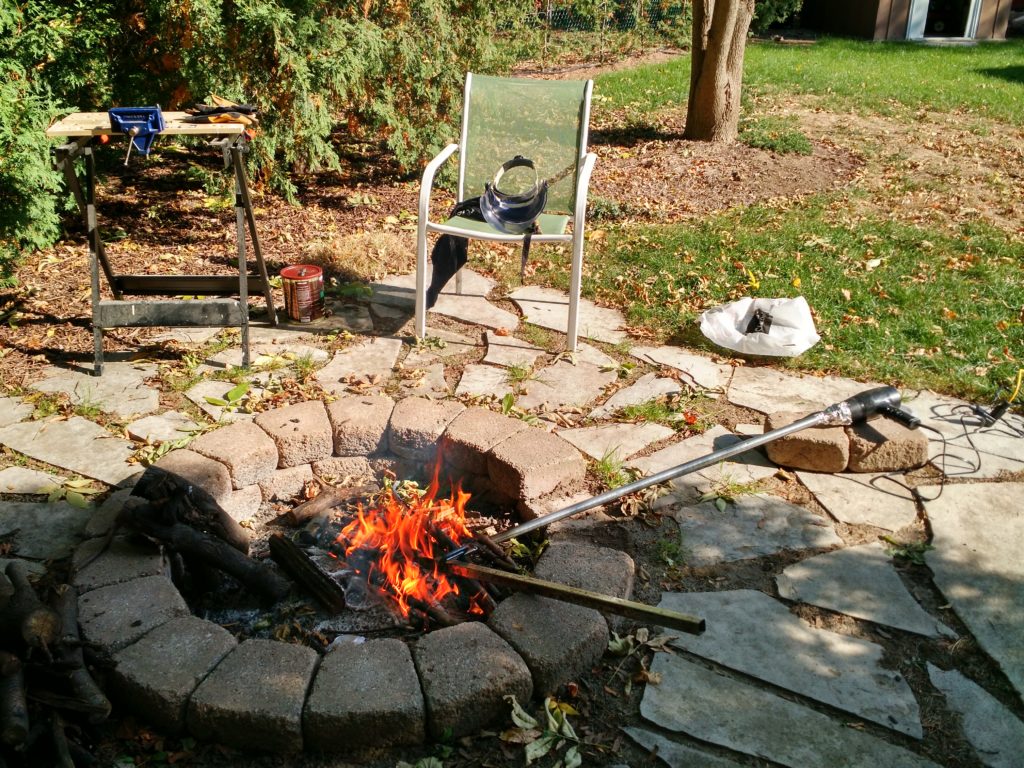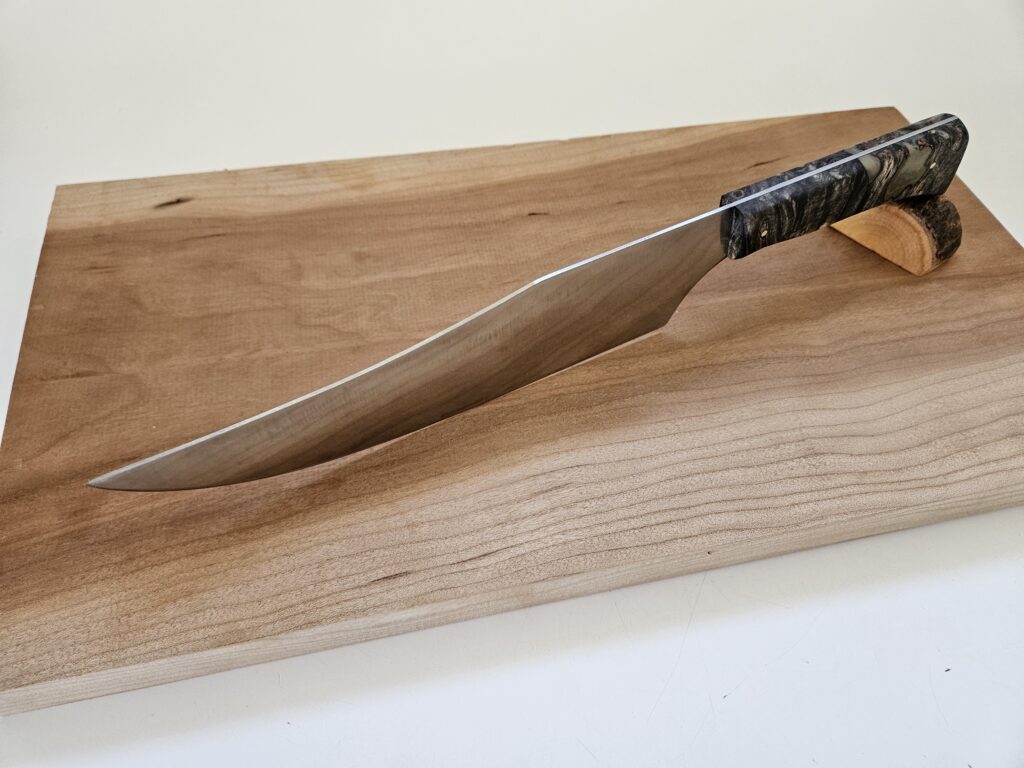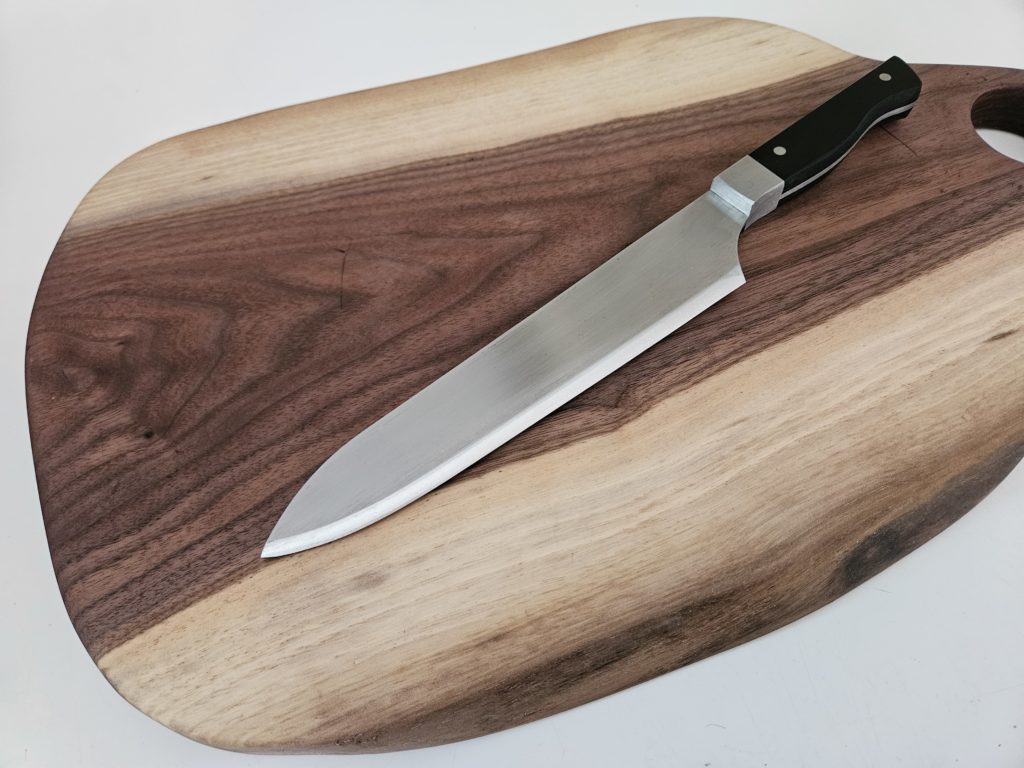My story started in 2016 when I made my first knife from an old discarded lawn mower blade. I used the camp fire pit in my backyard as a forge, and hammered it into shape. It’s been love ever since.

How I Make My Knives
I use two different methods to make knives: stock removal and forging. I generally use the stock removal method when making a kitchen knife from stainless steel. Stainless is preferred by most people for kitchen knives because it doesn’t rust and is easier to keep clean. I use only the best quality 440c stainless steel bar stock. While I do have a few unique kitchen knives forged from a truck leaf spring (very cool), it isn’t stainless so it does require periodic polishing, and not everyone wants to do that.
Stock removal and forging
Stock removal is the process of making a knife from a bar of flat ‘stock’ material, and cutting the knife from it. Once the profile of the knife has been cut from the flat stock, it is ground and sanded down into its final shape.
When forging, a piece of steel is heated up in a forge until it is bright orange or yellow. At this heat the steel becomes soft enough to respond to hammer blows. The blacksmith will then place the hot steel on an anvil and hammer the steel into the desired shape.
It is not stainless, though, so it will develop a patina over time and will need to be polished periodically. This has no effect, however, on its usefulness or durability and most outdoors people don’t mind a patina on their outdoor knives. It is a very worthwhile trade-off for the superior strength desired in a bushcraft knife.

Using stainless tool steel for the kitchen
Because kitchen knives do not need to be quite so strong, going to a 440c stainless is a good compromise for kitchen knives. That’s not to say that a knife made from stainless steel will be weak. 440c is still extremely strong, and is classed as a tool steel along with 01. It will hold up for a lifetime of rugged and demanding use in the home or restaurant.
Knife Handles
I use either micarta or hardwood for my knife handles. They are finished by hand with a very fine grit sand paper, then treated with several coats of either tung oil, linseed oil or Waterlox. Micarta is the toughest material and is water resistant, but all of our handles will hold up to rugged use.

Micarta is man-made from resin and linen or canvas and will not shrink, warp or crack with heat, humidity or extreme cold. It’s almost as tough as steel. When properly cared for and used only for its intended purpose, my handcrafted knives will last a lifetime.
Quality handmade knives from an experienced craftsmen will be far superior to cheap store-bought knives from China. That’s because I choose only the best steel milled in Germany, and I’m very careful with how I heat treat the blade. Each knife I make is individually heat-treated with care. This will ensure a superior, long lasting keen edge.
Why buy handmade?
Take proper care of your handmade knife and it will last decades, maybe even longer than you. I have two handmade knives in my private collection that are well over a hundred years old, and still in excellent condition with the original handles. For more on proper knife care, see my August 2023 blog on that topic here.
All of my knives are 100% made by hand from raw materials in Ontario Canada. I don’t outsource any of the work, and I don’t use purchased knife kits, knife blanks or templates. My shop is located in Brantford, an hour west of Toronto and just twenty minutes from Hamilton.
If you have any questions about my knives and how I make them, please feel free to contact me using my handy little ‘Contacts’ page.
Check out my galleries of available one-of-a-kind knives. I also do custom orders. All my knives can be engraved with a special message, name or date to make for a very unique and memorial gift.
Thanks for visiting!
